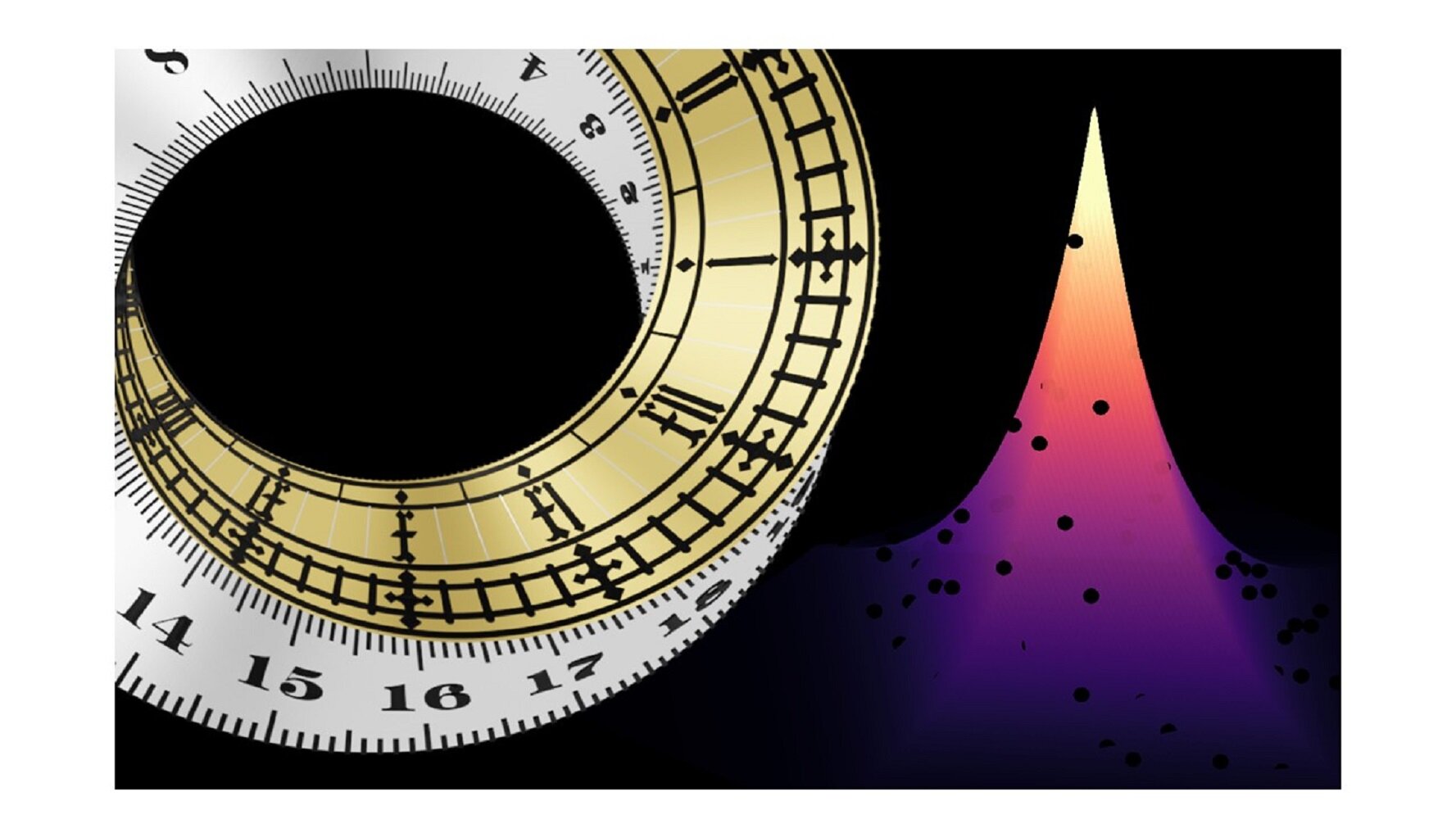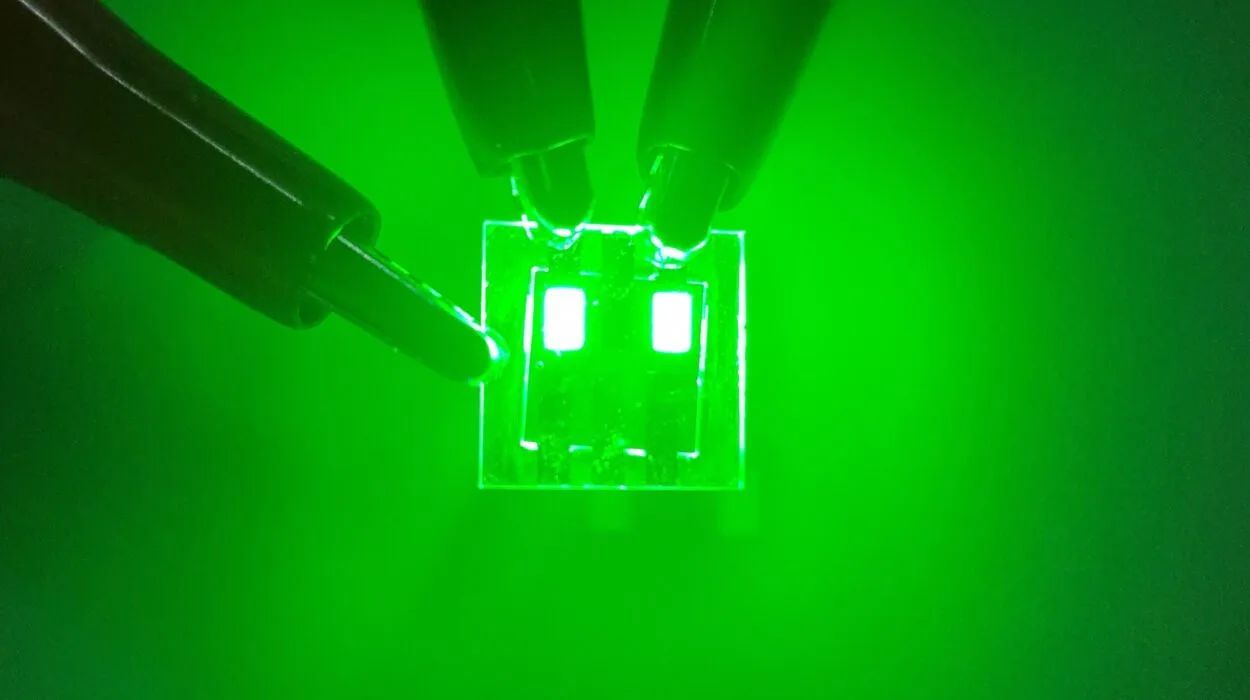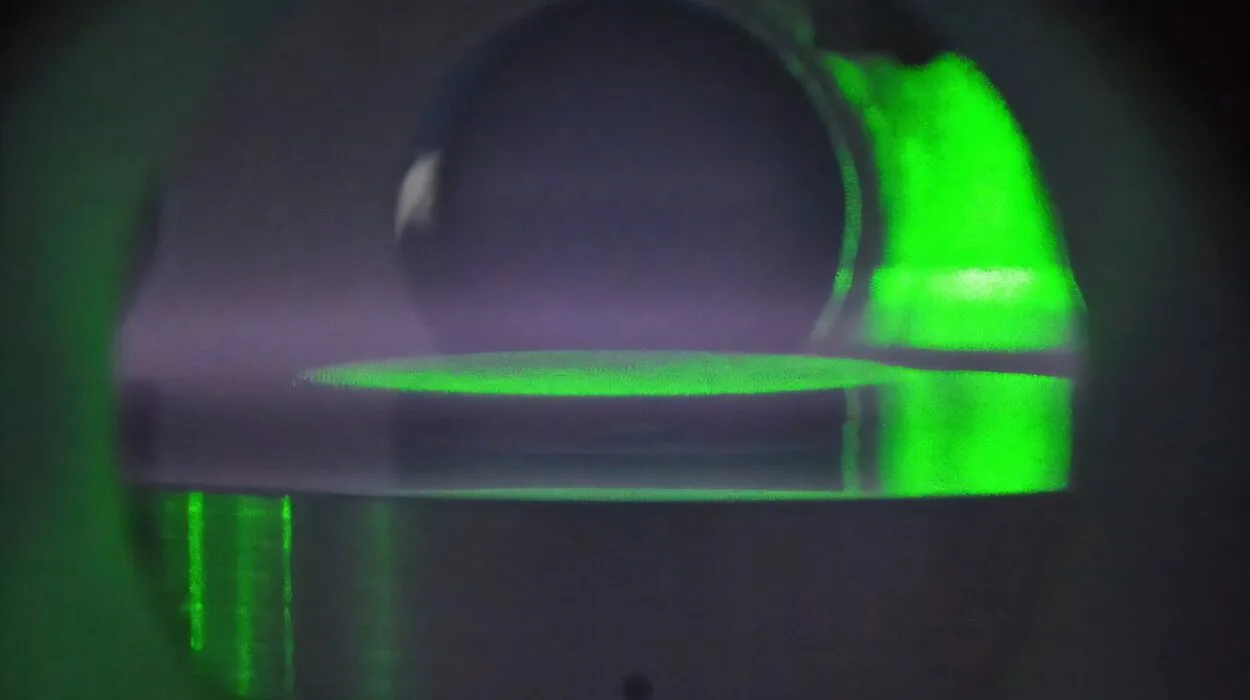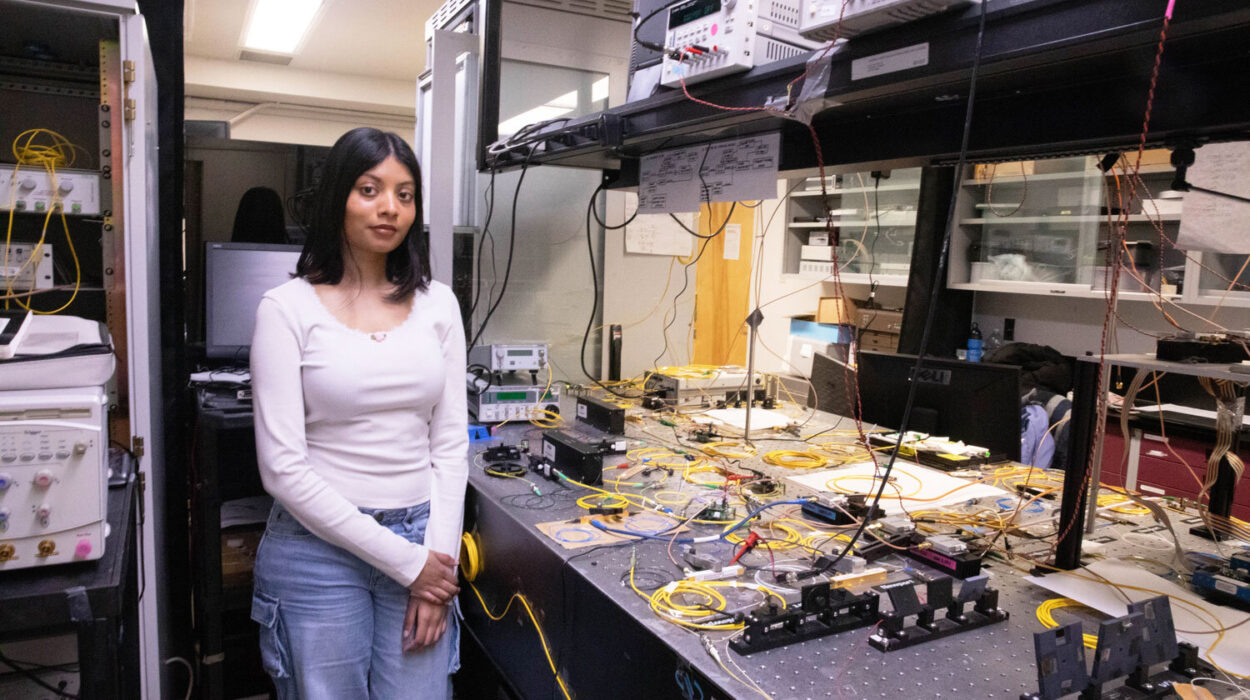In a moment that seems to transcend the ordinary rules of our universe, a flash of light erupts—from nothing. Not from a bulb or a flame, not even from the distant stars, but seemingly out of the void itself. For a brief heartbeat of existence, it blazes, anchored to a specific moment and place—and then, just as suddenly, it vanishes. There is no trace. No afterglow. No echo. Yet this miraculous burst is not the work of myth or fantasy. It’s a real, observable phenomenon born from an audacious idea: what if time, that ever-forward march we take for granted, is more than just a passive backdrop to reality?
This is the provocative question that inspired a group of researchers from the University of Rostock and the University of Birmingham. Their work, recently published in the journal Nature Photonics, is not merely another incremental step in optics or quantum theory. It is a seismic shift, a reframing of one of the universe’s fundamental axes—and it may just spark an entirely new field of physics.
A Century-Old Oversight
Physics has long had a bias—a spatial one. For centuries, we’ve viewed the universe largely through the lens of space: three neat dimensions, each measured, mapped, and maneuvered through with ease. Time, by contrast, has often been treated as an awkward sibling. We move through it inexorably, yes—but unlike space, we can’t go backward or sideways. There’s no “reversing the tape” of the cosmos, no turning time’s steering wheel. Sir Arthur Eddington once famously described this asymmetry as the “arrow of time,” a poetic observation that captured its unidirectional flow.
But despite its centrality to everything we experience—from aging and memory to entropy and death—time was rarely the star of the show. In most physical theories, it was a background variable, a parameter to plug into equations rather than a dynamic field in its own right. That might now be changing.
Spatiotemporal Crystals and the Birth of a New Paradigm
The seeds of this shift were planted by research into spatiotemporal crystals—exotic structures that repeat not just in space, like ordinary crystals, but in time as well. Imagine a lattice that not only stretches across dimensions but pulses rhythmically, like a perfectly choreographed cosmic dance. This concept has inspired physicists to ask profound questions: If structures can repeat in time, can there be topological properties—a kind of geometric immunity to chaos—that depend on time as a dynamic partner?
The answer, according to this new research, is yes—and the consequences are breathtaking.
In their groundbreaking experiments, the team at Rostock and Birmingham engineered conditions in which light doesn’t travel in the traditional sense. It doesn’t move through space like a beam or wave. Instead, it emerges at a single point in space-time, as if conjured by some invisible hand.
The Light that Comes from Nowhere
“It’s almost biblical,” says Prof. Alexander Szameit, one of the study’s lead authors. “In the beginning, there is nothing. Then physics says, ‘Let there be light!’—and there actually is light, at one precise moment in time and point in space.”
This light isn’t merely a visual spectacle. It’s a signature of something much deeper: a space-time-topological event. To understand that phrase is to grasp one of the most important ideas in modern theoretical physics.
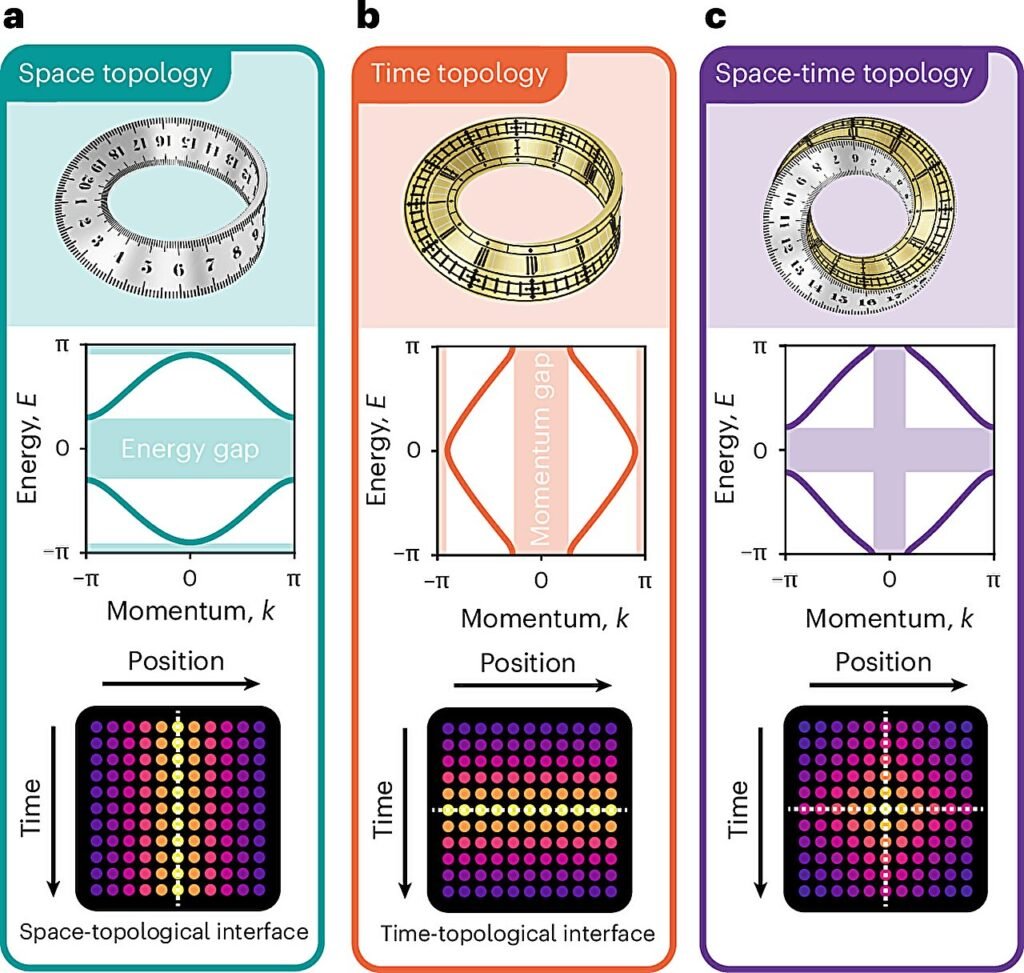
Topology is the mathematical study of shapes, but not in the way you might think. It deals with the essential, unchanging properties of structures that remain intact even when they’re twisted, stretched, or deformed. A donut and a coffee mug, for instance, are topologically identical because each has one hole. In physics, topology has led to discoveries like topological insulators—materials that conduct electricity on their surfaces while remaining insulating inside, immune to impurities or defects.
Now, physicists are applying those same principles to events in space-time. In the current research, the flash of light that appears and disappears is not random; it’s mandated by topology. As Prof. Hannah Price of the University of Birmingham explains, “Topology, a perhaps rather abstract but very fundamental and deeply consequential branch of mathematics, actually mandates certain physical behavior here.”
The Unbreakable Light
Because these space-time events are topological, they come with a superpower: robustness. They are impervious to noise, fluctuations, or disturbances. While ordinary light might scatter, distort, or fade in messy environments, these space-time-topological flashes remain pristine. They are shielded not by barriers, but by mathematical inevitability.
As Dr. Joshua Feis of the University of Rostock explains, “This is something seemingly all previously known states of light are susceptible to.” But not these. They are, in a sense, bulletproof—an almost mythical level of resilience achieved through rigorous physics.
Dr. Sebastian Weidemann, another key contributor to the study, adds that this robustness could have game-changing implications for real-world technologies. “Such protection is very desirable,” he says, “as it may allow the robust shaping of light waves in key applications such as imaging, communications, or lasers.”
In other words, this isn’t just about satisfying intellectual curiosity or scoring points in theoretical debates. It’s about building the next generation of optical technologies—devices that can work in unpredictable environments, that don’t falter in the face of noise, heat, or interference. It’s about light that keeps its shape no matter what the universe throws at it.
Why Time Now Matters More Than Ever
So, why does this matter on a deeper level? Because it challenges how we think about the universe at its most basic level. In classical mechanics, time is just a parameter. In quantum mechanics, it’s an evolution variable. In relativity, it bends and stretches along with space. But here, time is being treated as a dimension with its own symmetry-breaking and pattern-forming potential—a partner in shaping reality.
And when you blend that dynamic view of time with topology, you get a recipe for entirely new kinds of physics—physics that’s protected by mathematics itself.
This might seem abstract, but consider this: the technologies that run our world today—lasers, smartphones, GPS satellites, MRI machines—all sprang from theoretical physics that, at the time, seemed equally esoteric. Quantum theory and relativity began as strange, counterintuitive frameworks. But they are now embedded in nearly every corner of modern life.
Looking Forward: A New Dimension of Discovery
The implications of this discovery are vast and thrilling. Not only could it revolutionize photonics, but it could also open up entirely new fields of research. What happens when we apply space-time-topology to quantum fields? Could similar topological protections exist for electrons, phonons, or even gravitational waves? Could this lead to new forms of quantum computing, where information is encoded in time itself?
Moreover, this research prompts us to rethink time not as a passive arena, but as a shaper of physical phenomena. The universe may be full of hidden symmetries and effects we’ve simply ignored because we weren’t looking in the right direction—forward, in this case.
The work done at Rostock and Birmingham stands as a clarion call to physicists everywhere: time deserves more attention. It is not merely the canvas on which reality is painted—it might also hold the brush.
The Magic of Reality, Revealed
Ultimately, what makes this discovery so compelling is not just its technical brilliance but its philosophical resonance. Light from nothing. Events tied to space and time not by cause or material interaction, but by geometry and mathematics. These are ideas that border on the spiritual, even as they are grounded in science.
In the echo of that flash—from nowhere, going nowhere—we are reminded that the universe still holds mysteries that feel like magic. But unlike illusions, these marvels are real, testable, and, most exciting of all, repeatable.
And if light can come from nothing because of time’s hidden hand, what else might lie hidden in the folds of the fourth dimension?
Reference: Joshua Feis et al, Space-time-topological events in photonic quantum walks, Nature Photonics (2025). DOI: 10.1038/s41566-025-01653-w
